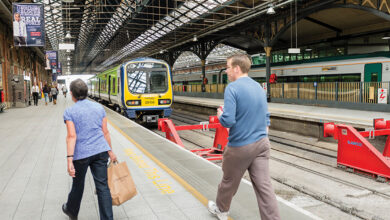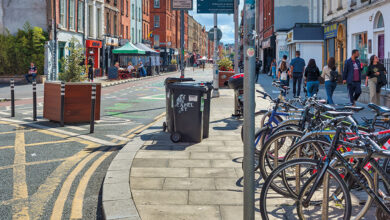Cutting down on speed
The Jake’s Legacy campaign will lead to councils having the option of introducing 20kph speed limits.
A campaign to cut traffic speeds in residential areas has prompted local authorities across Ireland to consider what more can be done to improve safety. The Jake’s Legacy campaign was started by the parents of six-year old Jake Brennan who died after being knocked down in Kilkenny last June.
Its key demands are as follows:
• Install speed ramps in all current housing estates;
• ensure that ramps are in place before houses are sold or occupied;
• create 30kph zones in residential areas; and
• allow for a lower speed limit of 20 kph (through primary legislation).
A standard 50kph speed limit applies in built-up areas with councils being able to lower this to 30kph (and/or install ramps) where this is considered necessary. One of the difficulties in implementing Jake’s law is that there is no standard definition of a housing estate. A departmental circular suggests that this could be defined as a self-contained grouping of houses with single or multiple entry points for vehicles.
Transport Minister Paschal Donohoe has accepted the idea of 20kph limits in principle but says that local authorities are best placed to define residential areas. An option to zone 20kph areas will be included in the forthcoming Road Traffic Bill.
In a national survey by the Department of Transport, Tourism and Sport last year, local authorities identified 8,725 housing estates. Fourteen per cent of estates had speed ramps installed and 1.5 per cent (outside Dublin) had 30kph speed limits. The limit was imposed on three residential areas in Dublin: Marino, Irishtown and beside South Lotts Road. When deciding to install ramps, local authorities consider a range of factors including the road’s accident history, traffic volume, actual speeds and road alignment. Proximity to schools and other sources of pedestrians is also considered.
The department recommends a combination of 30kph and ‘children at play’ warning signs at the entrance to housing estates where fast traffic speeds have been identified as a problem.
Speed management has been an intrinsic part of Irish road design and layout since 2003. The emphasis was firstly on physical traffic calming measures but more attention has been given to speed limits and ‘children crossing’ signage in recent years. The 2013 Design Manual for Urban Roads and Streets is the most recent relevant policy document and proposes restricting carriageway widths, limiting forward visibility for drivers, and avoiding long straight sections of road.





